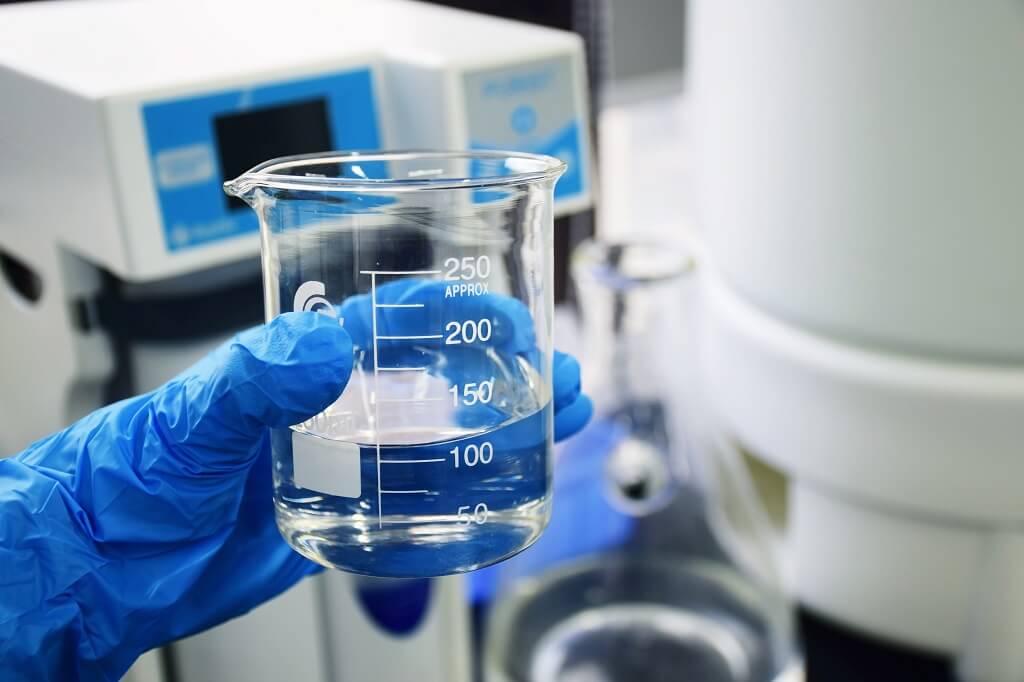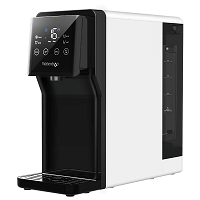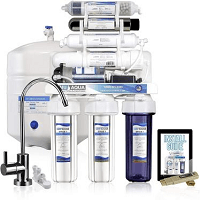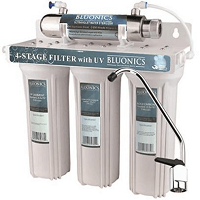A UV water purifier is a great option for water sources prone to carrying live bacteria, cysts, viruses, and other organisms that pose dangers to human health. UV systems expose said living contaminants to a germicidal ultraviolet wavelength, capable of disrupting pathogenic microorganism DNA. In turn, this negates their ability to reproduce, and spreading throughout drinking water sources. This is great news for individuals living around dangerous sources of water, and don’t have another option for consumption. Let’s delve a little further into a UV water purification system, as well as the conditions in which it would be most beneficial.
Is it Safe to Use a UV Purifier?
Water treated through UV means is completely safe to consume. The composition of the water is by no means altered through the use of harsh chemicals. In fact, a UV-C light is all that is used to disinfect water through UV sterilization. Although a UV-C light is harmful for use on humans, one simply needs to avoid touching or looking directly at the UV bulb during use. Much like it disrupts the life cycle of living microorganisms, the UV-C light may harm humans and mammals alike. By reducing direct exposure, humans may us UV purifiers to provide their family with safe drinking water – regardless of the source.
Alternatively, water treatment facilities often utilize chlorine as a form of tap water treatment. Because UV light treatment is a far superior option to providing safe drinking water, many wastewater treatment plants have turned to using UV treatment means, instead. This is especially true in situations where chemical by-products must be eliminated from resulting water. UV systems are also easier to maintain, and work as a safe disinfectant as opposed to other chemical-based solutions, including chloramine or chlorine. The EPA has approved UV purification as a means of water disinfection, as an environmentally superior method. This simple process benefits millions of residential areas and businesses, without the risk of the creation of dangerous byproducts.

The Pros and Cons of UV Light Water Filters
- Effectively destroys 99.99% of viruses and bacteria
- Purifies water sans chemicals
- Presents an eco-friendly alternative to chemical-based water disinfection methods
- Once installed, trouble-Free use only requires annual service
- Capable of running around the clock, for consistent water conditions
- Safe to use, and cost-effective.
- There are no dirty parts to throw away
- Water quickly flows through the system without a holding tank
- Low electrical needs
- Capable of conserving water
- Convenient upkeep only requires annual lamp change
Inherent Disadvantages of UV Water Purification
The method of water disinfection through UV poses many advantages. Regardless, there are still several disadvantages to any mode of water purification. Ultimately, UV light is only capable of elimination live microorganisms present in water. On the other hand, UV technology is not able to remove salt, chlorine, heavy metals, or other man-made substances, pharmaceuticals, and more. This is why UV light should be used in tandem with other types of water filtration, especially to get the most out of UV technology. With that in mind, utilizing UV water treatment is a good way to provide purified water, especially alongside other types of filtration. In short, UV light is an affordable, quick way to disinfect tap water, or even at the point of entry.
Top 3 UV Purifiers on The Market
Waterdrop N1 Countertop Reverse Osmosis Water Filtration System
Utilize the power of a UV light paired with RO technology, in the Waterdrop N1 countertop filtration system. This unit further enables homeowners to kill living organisms, like bacteria and viruses, each and every hour. Through the use of a 0.0001 micron RO membrane, the Waterdrop N1 eliminates various impurities commonly found in tap water. Homeowners may also monitor overall water quality in a close manner, through the use of the integrated smart display screen.
Enjoy anywhere between 6 to 18 months of water purification, thanks to the MRO filter and CF filter. Installation is also easy, requiring only the use of an electrical socket.
NU Aqua Platinum Series UV & Alkaline RO Water Filtration Unit
After rigorous development, the NU Aqua Platinum Series water filtration system provides clean, consistently pleasant tasting water. With professional grade, high-quality quick connect fittings, the lead-free designer faucet serves to accentuate your kitchen counter. With NSF 100% certifications, and a double o-ring filter housing, you are guaranteed to enjoy healthy water on demand, in addition to a leak-free experience. The lack of water pressure should not be a concern if it is an aspect of your home. Featuring a heavy duty booster pump, the NU Aqua Platinum Series unit can bring water pressure back up to optimal levels. Filter calcium, zinc, iron, copper, selenium, and magnesium out of your tap water, thanks to a 5-stage premium alkaline filter. Furthermore, this unit can add minerals back into your tap water, while it increases antioxidants, and overall oxygenation. The end result is a more balanced, alkaline water to hydrate your body.
Bluonics UV Light Purifier System (for Under Sink Filtration)
When eco-friendliness is at the top of your list, the Bluonics UV Light Purification System is a great option. Step away from the use of dangerous chemicals, chlorine, and chloramines, for pleasantly tasting and smelling water. It does not affect overall alkaline and acidity levels of your tap water, and also doesn’t impact the pH levels. For use in residential and commercial settings, the Bluonics UV system offers a 4-stage water filtration system. Furthermore, the UV light provides an effective mode of water treatment, for the removal of live microorganisms. In turn, your family will enjoy healthy, sparkling clean drinking water without the stress of dangerous contaminants. You will not notice a change of the color, odor, and taste of your water, nor an effect on pH levels, acidity, or alkalinity.






